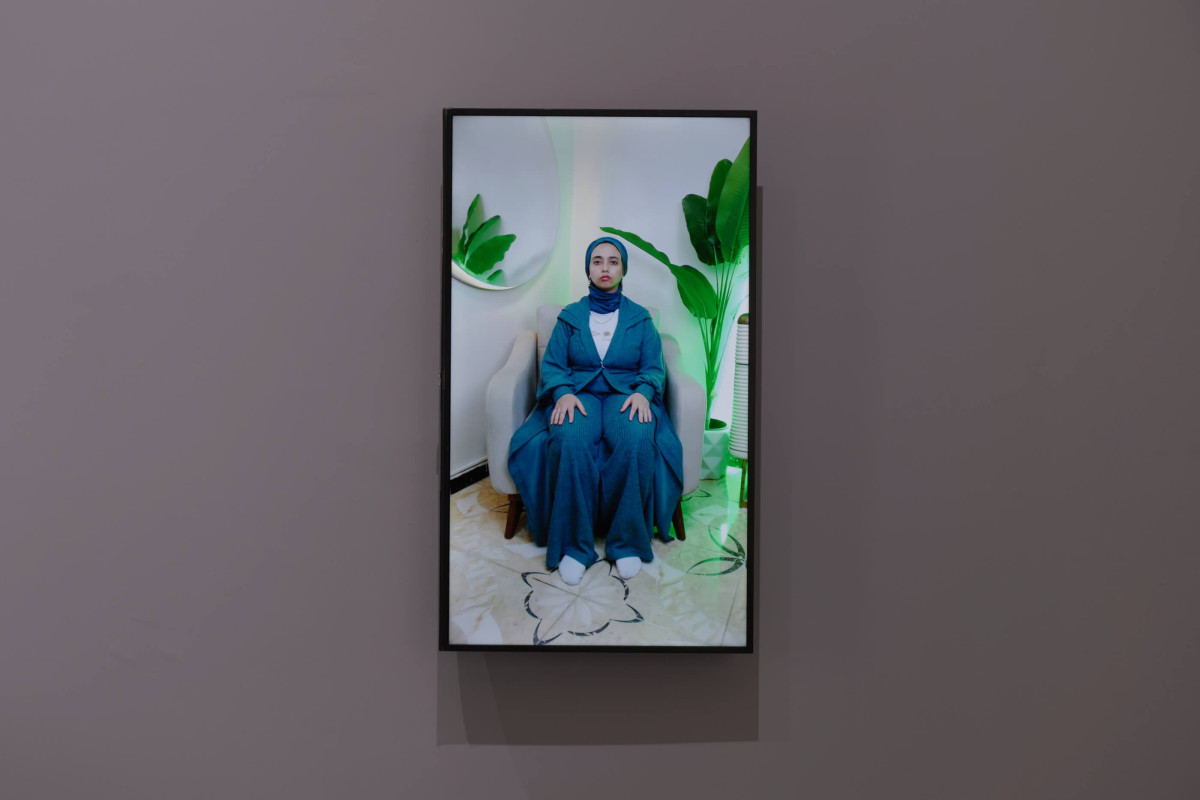The Political Aesthetics of Scale: Artistic Practice at the Limits of the Political Imaginary (2025-2026)
Kerry Guinan

Kerry Guinan
Ongoing
This artistic research project explores the capacity of artistic practice to conceptualise, and make sensible, political phenomena operating at extreme spatio-temporal scales, such as high-turnover, globalised, production chains, international, tele-communication networks, and deep-time, geological activity. It considers spatio-temporal differentiation as a fundamental imaginative faculty that preconditions perception and understanding. However, as various theories of the sublime suggest, human imagination struggles to comprehend phenomena at highly differentiated, non-human scales. These difficulties contribute to crises of political imagination in globalised and planetary politics, in which issues may appear too vast, complex, and disorientating to be effectively addressed. If artistic practice can indeed contribute to the reconfiguring of political imaginaries, this project puts art to work at the very limits of imagination. Through the creation and analysis of artistic works that challenge or intensify spatio-temporal awareness, this research will investigate how a political aesthetics of scale may redistribute ethico-political sensibilities of responsibility, causality, and agency.
As human societies increasingly integrate themselves at a global level, the world itself appears to shrink. Productive and technological forces institute time–space compression, collapsing barriers of geographic distance, while compressing turnover-time towards instantaneity. Conceptual attempts to position oneself within complex, globalised networks may therefore provoke an alienating, disorientating sense of existing on multiple scales. Simultaneously, profound ecological and climate crises urge an awareness of non-human timescales and planetary spatial scales. Dipesh Chakrabarty and Timothy Morton thus argue that attending to hyper-scaled phenomena— ‘hyperobjects’ in Morton’s case and ‘the planetary’ for Chakrabarty— is necessary for reckoning with our more-than-human, multi-scale entanglements, decentering the human in political imaginaries. Yet, if the distance between human thought and the at-scale systems it inhabits is itself a measure of alienation, it is reasonable to caution that the act of thinking at-scale may decentre the human to the degree of immobilising human agency.
This project seeks to investigate these political claims through artistic practice, potentially holding them in balance through the development of an aesthetic framework of the sublime. Michael Shapiro, for example, employs Jacques Rancière’s concept of dissensus to outline an avant-garde ‘political sublime’, which challenges default perceptual and epistemic frameworks, opening onto the co-presence of multi-scaled worlds that demand continuous attention. Invoking these multi-scale worlds, the approach of the project is to deploy arts practice as a medium (physically, conceptually, technologically, or otherwise) between phenomena that are sensible and immediate at the human scale and those that exceed sensible comprehension but are potentially imaginable. The aim is not to collapse this difference between the immediate and the imaginable, but to render the difference itself perceptible. In this way, the artistic practice aims not to merely represent large-scale phenomena, but to produce new forms of knowledge about the political effects of scale itself, investigating its role in the structuring of political imaginaries.
Importantly, therefore, the intention of the research is not to create representations of at-scale totalities, nor to assume that such totalities are conceptually available. Critical efforts to imagine the “bigness” of systems such as capitalism, as Anna Tsing, among others, have emphasised, can tend towards universalist abstractions that reduce vital difference, liminality, and contradiction. Rather, the approach of the project is highly situated, employing site-specific and participatory artistic modalities to critically engage with sites and actors (both human and non-human) implicated in large-scale systems. For example, workers in a garment production chain originating in India, the landscape of the world’s largest iron-ore mine in Sweden, and the geological history of a desert in South Africa. Researching and responding to these sites will yield situated knowledge of scale, the sublime, and the political imaginary, allowing practice to critically expose the limits and possibilities of these theoretical constructs.
The research will generate outputs primarily in the form of art works, conference papers and journal articles:
Previous
A solo exhibition ‘Distance is a Measure of Closeness’ at Ormston House Limerick, Ireland. This included Portraits, a new series of live, durational performances-to-video produced with collaborators based across three continents and requiring a specially designed system to ensure prioritization of continuous HD live streaming over many hours from multiple sites. (May- July, 2025).
The exhibition of the artwork Artists in ‘Staying with the Trouble’ at the Irish Museum of Modern Art (May-September, 2025). The work comprises a set of six blank art canvases, which have each been signed by a factory worker responsible for producing the canvases in the La Romana Free Trade Zone in the Dominican Republic.
Forthcoming
Tangible Earth, a touch-based artwork representing seismic activity, to be presented in the context of the ‘Idiorrhythmic Imaginaries’ research exhibition at the Academy of Fine Arts, University of the Arts Helsinki, curated by Prof. Henk Slager
Production of a site-specific artwork developed for the 1,436 km² landscape of the Tankwa Desert, South Africa (April, 2026).
In collaboration with the curator Caimin Walsh, production of a new site responsive work in Kiruna, Sweden, the site of the world’s largest iron-ore mine in the Arctic Circle (2026).
A series of international presentations of The Red Thread, a live installation of industrial sewing machines remotely controlled in real time by garment workers in a Bengaluru, India factory (2026/7).
A series of research papers and conference presentations outlining and analysing the project’s emergent aesthetic methodologies and political sensibilities (2025/26).